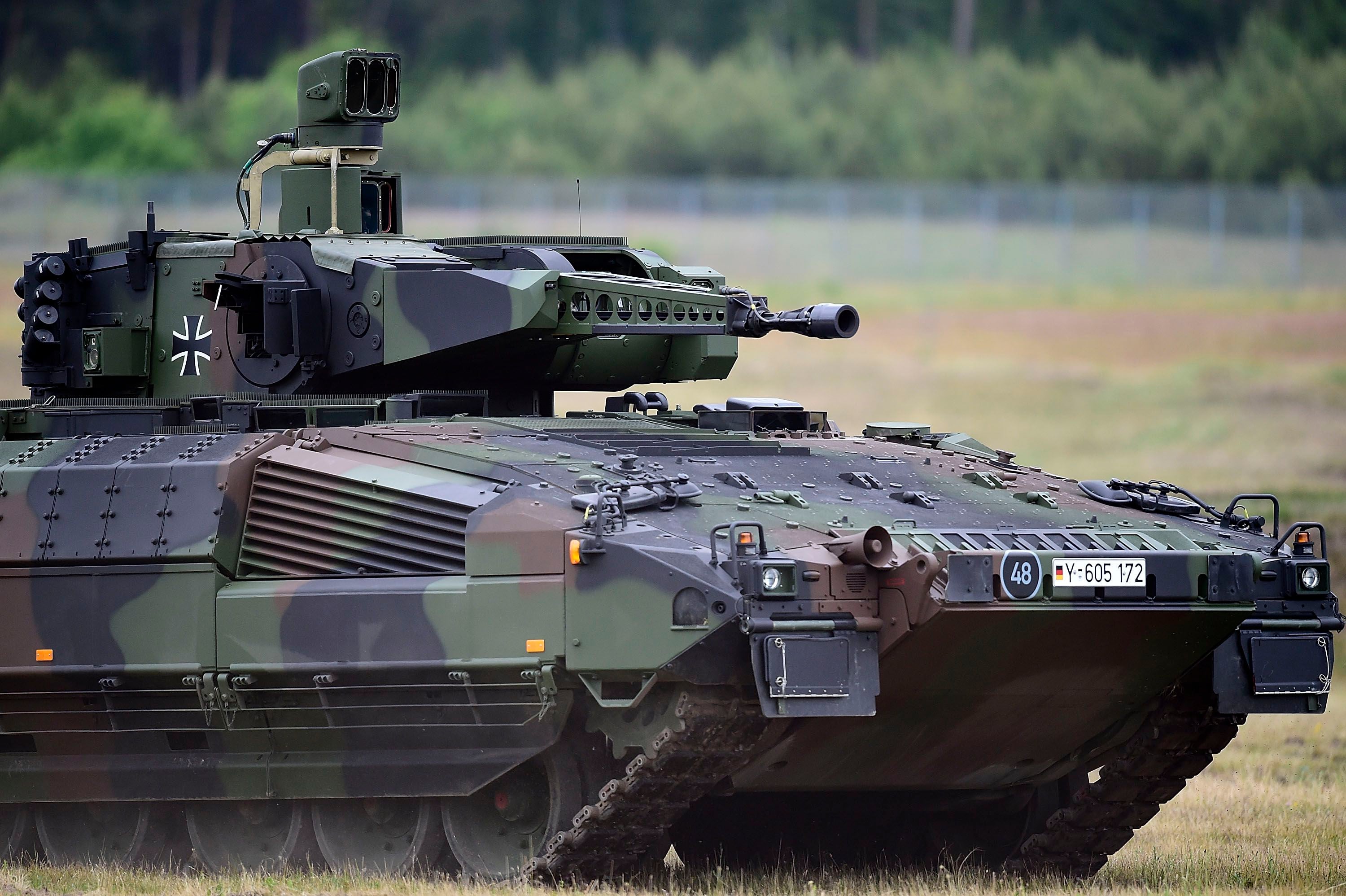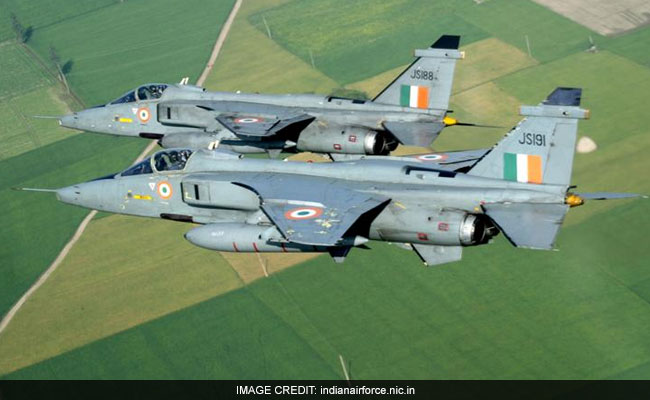SOURCE: RAUNAK KUNDE / NEWS BEAT / IDRW.ORG

India and Russia have resumed discussions for the procurement of the advanced “Container-S” over-the-horizon (OTH) radar system, specifically the 29B6 “Container” radar, through a government-to-government (G2G) deal, according to informed sources close to idrw.org. This development follows confirmation that both nations are also exploring a G2G agreement for the sale of Russia’s Voronezh OTH radar system, signaling India’s intent to bolster its air defense capabilities against stealth and long-range threats.
The Container-S radar, a cutting-edge Russian OTH system, is designed for long-range airspace monitoring and ballistic missile detection. With a detection range exceeding 3,000 kilometers, the radar is capable of identifying airborne threats, including stealth aircraft and ballistic missiles, at distances and altitudes that conventional radar systems struggle to match. The first Container radar, located near Kovylkino in Mordovia, Russia, became operational in December 2013 and entered combat duty in 2019. A second system is planned for deployment in Kaliningrad.
Continue readingSOURCE: AFI

In the wake of a recent Indian Air Force (IAF) operation, documents have surfaced indicating urgent maintenance requirements for high-value aircraft components within the Pakistan Air Force (PAF). The aircraft explicitly named in these records are the AW-139 utility helicopter and the Dassault Falcon DA-20, an electronic warfare jet, both of which play critical roles in Pakistan’s aerial operations. The need for repairs, particularly for the DA-20, underscores the potential impact of the IAF strike on Pakistan’s electronic warfare capabilities.
The AW-139, a medium-lift utility helicopter manufactured by Leonardo S.p.A., is a versatile platform used by the PAF for a range of missions, including transport, search and rescue, and potentially support for special operations. Its inclusion in the maintenance documents suggests that the IAF operation may have disrupted logistical or operational support capabilities. The AW-139’s advanced avionics and robust design make it a high-value asset, and any downtime could affect mission readiness, particularly in scenarios requiring rapid deployment or disaster response.
Continue readingSOURCE: AFI

The development of a comprehensive diagnostic system for Aero Gas Turbine Engines (AGTE) marks a significant step forward in enhancing the operational reliability and longevity of these critical systems. Spearheaded by M/s ChiStats Labs Private Limited, Pune, in collaboration with DRDO and GTRE, this innovative project leverages modern Artificial Intelligence/Machine Learning (AI/ML) technologies to create virtual sensors for health monitoring, offering a robust solution for both military and civilian applications.
The Virtual Sensors for Aero Gas Turbine Engine Health Monitoring System is designed to improve the performance and durability of AGTEs. By developing a digital twin of the engine, the system efficiently handles large-scale data and conducts operational assessments with a high degree of accuracy. This virtual sensor framework is a cornerstone of the health monitoring process, enabling real-time analysis of various engine components.
Continue readingSOURCE: AFI

The Indian Navy is racing against time to restore its guided missile frigate INS Brahmaputra, which was severely damaged in a fire and subsequent capsizing at Mumbai’s Naval Dockyard on July 21, 2024. Senior naval officials, speaking on Saturday, May 24, 2025, provided the first major update on the warship’s recovery, projecting that it could be seaworthy by the end of 2025 or early 2026, with full combat readiness expected by mid-2026. The announcement offers hope for the 3,850-tonne vessel, which many feared might never sail again due to the extensive damage it sustained.
The INS Brahmaputra, a locally produced frigate built by Kolkata-based Garden Reach Shipbuilders and Engineers Limited (GRSE) and commissioned in 2000, suffered a catastrophic accident last year. A fire broke out on board during repairs, leading to the ship tipping over after firefighting units pumped large volumes of water to extinguish the blaze. Tragically, the incident claimed the life of Leading Seaman Sitendra Singh, who drowned while most of the crew either evacuated via the gangway or swam to safety. Singh was among the personnel involved in the ongoing maintenance work at the time.
Continue readingSOURCE: AFI

In a remarkable display of precision and skill, the Indian Air Force’s (IAF) elite Garud Commando snipers played a pivotal role in countering Turkish-supplied drones during the recent military escalation between India and Pakistan, known as Operation Sindoor. This conflict, which erupted in early May 2025 following a terrorist attack in Pahalgam on April 22, 2025, marked a significant evolution in South Asian warfare, with drones emerging as a central element of Pakistan’s offensive strategy. The Garud Commandos, renowned for their specialized training and adaptability, proved instrumental in neutralizing this aerial threat, showcasing India’s robust counter-drone capabilities.
The conflict was triggered by a deadly attack on Hindu tourists in Pahalgam, Jammu & Kashmir, which India attributed to Pakistan-backed terrorist groups. In response, India launched Operation Sindoor on May 7, 2025, a sophisticated operation involving missiles, drones, and airstrikes targeting terrorist bases and military infrastructure deep inside Pakistan and Pakistan-occupied Kashmir (PoK). Pakistan retaliated with a large-scale drone and missile assault, deploying an estimated 300–400 Turkish-origin drones, including Baykar YIHA III, Asisguard Songar, and Bayraktar TB2 models, alongside Chinese-supplied PL-15 missiles. These drones targeted 36 military installations across Jammu & Kashmir, Rajasthan, and Punjab, including a notable attempt to strike the Golden Temple in Amritsar on the night of May 7–8, 2025.
Continue readingSOURCE: IDRW.ORG

Armoured Vehicles Nigam Limited (AVNL), a public sector defence company headquartered in Avadi, Chennai, is spearheading an ambitious initiative to develop a new generation of light tanks tailored for India’s diverse and challenging operational environments, particularly high-altitude warfare. In a strategic pivot towards advanced Western technologies, AVNL is engaging with global defence giants such as Belgium’s John Cockerill and Israel’s Elbit Systems to integrate cutting-edge command, control, communications, computers, intelligence, surveillance, and reconnaissance (C4ISR) systems, lightweight firepower, and advanced survivability features into its next-generation platforms.
While earlier speculation linked AVNL to a potential collaboration with Russia’s Rosoboronexport for the 2S25 Sprut-SD light tank, the company’s recent focus on Western designs signals a shift towards modular, high-tech solutions to meet India’s future battlefield requirements.
Continue readingSOURCE: IDRW.ORG

The Indian Army has taken a significant step toward bolstering its air defense capabilities with the successful completion of internal trials for the AK-630M integrated Mobile Gun System (MGS). Following the trials, the system is now progressing to the next phase of testing, with minor alterations being incorporated based on feedback from the initial evaluations. This development underscores India’s ongoing efforts to modernize its military and address emerging aerial threats with advanced, indigenous solutions.
The AK-630M, originally a naval close-in weapon system (CIWS) developed by the Soviet Union (and later Russia), has been adapted for land-based operations in this integrated MGS configuration. The system features a 30mm six-barrel rotary cannon, capable of delivering a high rate of fire—up to 5,000 rounds per minute—making it highly effective against low-flying aircraft, drones, and incoming missiles. Mounted on a mobile platform, as seen in the image of a truck-based turret system, the AK-630M MGS offers enhanced mobility and flexibility, allowing rapid deployment across diverse terrains to counter aerial threats.
Continue readingSOURCE: AFI

In a display of unparalleled aerial dominance, the Indian Air Force (IAF) executed a meticulously planned salvo attack using SCALP and BrahMos-A missiles to strike Pakistan Air Force (PAF) air bases during Operation Sindoor, launched in response to the April 22, 2025, terror attack in Pahalgam, Jammu and Kashmir.
The operation, which targeted terrorist infrastructure in Pakistan and Pakistan-occupied Kashmir (PoK), saw the IAF leverage the complementary capabilities of the SCALP’s stealth and the BrahMos-A’s Mach 3 speed to overwhelm PAF defenses, delivering a crippling blow to their operational capacity. This strategic combination not only evaded Pakistan’s air defense systems but also showcased India’s advanced missile technology and tactical ingenuity.
Continue readingSOURCE: AFI

India’s National Security Adviser (NSA) Ajit Doval is scheduled to visit Moscow in the coming days to attend the 13th International Meeting of High Representatives for Security Issues, set for May 27–29, 2025. Amid escalating regional tensions, Doval is expected to press the Russian government for the expedited delivery of the remaining two S-400 air defense systems, a critical asset for India’s military. This urgency stems from the S-400’s unprecedented performance during the recent India-Pakistan conflict, where the system was fired at least 11 times and achieved a historic milestone by taking out a Pakistan Air Force (PAF) Saab 2000 Erieye Airborne Early Warning and Control (AEW&C) aircraft operating deep inside Pakistani airspace at a record-breaking range of 314 kilometers.
The S-400, christened “Sudarshan Chakra” by India, proved its mettle during Operation Sindoor, launched in response to the April 22, 2025, terror attack in Pahalgam, Jammu and Kashmir, which claimed 26 civilian lives. India’s retaliatory strikes targeted terrorist camps in Pakistan and Pakistan-occupied Kashmir (PoK), prompting a large-scale Pakistani counteroffensive. On the night of May 7–8, 2025, the PAF attempted to engage military targets across 15 Indian cities, including Srinagar, Pathankot, Amritsar, and Bhuj, using 300–400 drones and air-launched missiles, including the Chinese-made PL-15E.
Continue readingSOURCE: AFI

Bengaluru, the hub of India’s aerospace innovation, has once again captured global attention with the emergence of a new stealth-shaped unmanned aerial vehicle (UAV) at the Indian Air Force’s (IAF) prestigious Aircraft and Systems Testing Establishment (ASTE). On May 25, 2025, images of the sleek, red-colored UAV with distinct stealth features surfaced, sparking widespread interest among defense analysts and enthusiasts. The UAV, spotted at ASTE’s facility in Bengaluru, is believed to be part of the IAF’s ongoing efforts to enhance its autonomous warfare capabilities through cutting-edge experimentation.
The Aircraft and Systems Testing Establishment, located in Bengaluru, is the IAF’s premier institution for flight testing and evaluation. Renowned for its role in shaping India’s aerospace capabilities, ASTE has a dedicated group focused on testing and developing unmanned aerial vehicles (UAVs). This group regularly conducts experiments to push the boundaries of aerial technology, ensuring the IAF remains at the forefront of modern warfare. The recent sighting of the stealth-shaped UAV underscores ASTE’s pivotal role in advancing India’s indigenous defense technologies, particularly in the realm of autonomous systems.
Continue readingSOURCE: AFI

In a significant diplomatic move, India has formally requested Russia to cease the supply of RD-93 engine spares to Pakistan, citing their use in Pakistan Air Force (PAF) JF-17 Thunder fighter jets deployed against India during the recent India-Pakistan conflict, dubbed Operation Sindoor. This conflict, sparked by a terrorist attack in Pahalgam, Jammu & Kashmir on April 22, 2025, has escalated tensions between the two nuclear-armed neighbors, with Pakistan’s JF-17s playing a prominent role in aerial engagements. India’s concerns center on the strategic implications of these Russian-made engines, which power the JF-17 fleet, and the supply chain dynamics involving China as an intermediary, given that the RD-93 was initially intended for China’s Shenyang J-31 stealth fighter program.
The RD-93, a variant of the RD-33 engine developed by Russia’s Klimov plant under the United Engine Corporation (UEC), is a critical component of the JF-17 Thunder, a lightweight, single-engine, multirole fighter jet jointly developed by Pakistan Aeronautical Complex (PAC) and China’s Chengdu Aircraft Corporation (CAC). The JF-17, with a fleet of approximately 156 aircraft as of September 2024, forms the backbone of the PAF, designed for air-to-air and air-to-ground missions. The RD-93 engine, providing a maximum thrust of 8,300 kgf, has been integral to the jet’s performance, with an upgraded RD-93MA variant (offering 9,300 kgf) developed for the JF-17 Block III, enhancing its combat capabilities.
Continue readingSOURCE: AFI

In a significant step towards modernizing its mechanized forces to meet the evolving threats of contemporary warfare, the Indian Army has begun equipping its BMP-2 “Sarath” Infantry Fighting Vehicles (IFVs) with cope cages for the first time. These protective structures, designed to shield against First-Person View (FPV) drones and loitering munitions, mark a critical adaptation to the changing dynamics of the battlefield, particularly following the recent India-Pakistan conflict, Operation Sindoor, in May 2025.
The integration of cope cages on the BMP-2 fleet underscores India’s proactive approach to enhancing the survivability of its mechanized infantry in response to the growing prevalence of drone-based threats, as observed in recent global conflicts like Ukraine and Nagorno-Karabakh.
Continue readingSOURCE: RAUNAK KUNDE / NEWS BEAT / IDRW.ORG

In a major stride toward self-reliance in defense technology, the upgraded Uttam Gallium Nitride (GaN)-based Active Electronically Scanned Array (AESA) radar, developed for the Tejas MkII fighter jet, has officially entered production. The Defence Research and Development Organisation (DRDO), through its Electronics and Radar Development Establishment (LRDE), has confirmed that deliveries of the radar are scheduled to be completed before the rollout of the Tejas MkII prototype, planned for late October or early November 2025. This milestone underscores India’s growing expertise in advanced avionics and its commitment to equipping the Indian Air Force (IAF) with cutting-edge, indigenous systems.
The upgraded Uttam GaN-based AESA radar, an evolution of the earlier Gallium Arsenide (GaAs)-based Uttam radar, features over 900 Transmit/Receive (T/R) modules, a significant increase from the 912 T/R modules in the Uttam Mk1 variant. This enhancement is made possible by the larger nose cone of the Tejas MkII, which provides additional space for more T/R modules, boosting the radar’s detection range, tracking accuracy, and multi-target engagement capabilities. The GaAs-based Uttam radar has already been successfully tested on the Tejas Mk1 Limited Series Production (LSP) aircraft, completing 125 developmental flights by April 2024, demonstrating its reliability in air-to-air, air-to-ground, and air-to-sea modes.
Continue readingSOURCE: RAUNAK KUNDE / NEWS BEAT / IDRW.ORG

The Indian Air Force (IAF) finds itself at a crossroads in addressing its critical shortage of Airborne Warning and Control System (AWACS) platforms, with Boeing’s E-7A Wedgetail being offered as a proven, off-the-shelf solution. However, according to sources cited by idrw.org, the IAF remains committed to its indigenous Netra Mk1A and MkII AWACS programs, despite their projected deployment timeline of 4–5 years.
While the Pakistan Air Force (PAF) currently operates a larger AWACS fleet, even after retiring its Chinese-built platforms, the IAF is banking on a robust plan to procure six Netra Mk1A systems based on the Embraer EMB-145 platform and six MkII systems using the Airbus A321, both equipped with cutting-edge Gallium Nitride (GaN)-based Active Electronically Scanned Array (AESA) radars comparable to the Wedgetail’s. With delivery timelines for the E-7A aligning closely with the indigenous programs, the IAF appears poised to prioritize self-reliance over foreign procurement.
Continue readingSOURCE: RAUNAK KUNDE / NEWS BEAT / IDRW.ORG

Hindustan Aeronautics Limited (HAL) has confirmed that the Indian Air Force’s (IAF) Jaguar Darin-III aircraft, equipped with cutting-edge upgrades, will remain in service beyond 2035, thanks to a life extension program and significant technological enhancements. The integration of the ELM-2052 Active Electronically Scanned Array (AESA) Fire Control Radar (FCR) and the Advanced Short Range Air-to-Air Missile (ASRAAM) has bolstered the combat capabilities of the Darin-III variant, ensuring its operational relevance for at least another decade.
The Jaguar, a deep-penetration strike aircraft, has been a mainstay of the IAF’s fleet since the late 1970s. The Darin-III upgrade, undertaken by HAL, enhances the aircraft’s avionics, radar, and weapon systems, enabling it to perform precision strikes, air superiority missions, and reconnaissance roles with greater effectiveness. The ELM-2052 AESA radar provides superior target detection and tracking, while the ASRAAM integration enhances the aircraft’s air-to-air combat capabilities, making the Darin-III a formidable platform in modern aerial warfare.
Continue reading